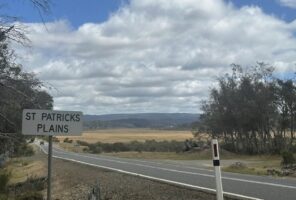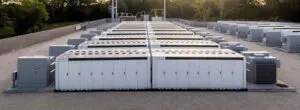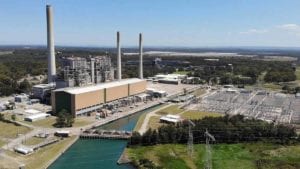Victoria’s electricity network could safely accommodate the early closure of EnergyAustralia’s ageing Yallourn Power Station with renewable energy and battery storage, even with just the minimum three years’ notice, a new study has found.
The analysis by Reputex, commissioned by Environment Victoria, finds that the much-speculated early closure of the ageing 1,450MW power station, ahead of EnergyAustralia’s scheduled date of 2032, could be absorbed as early as 2023 with a mix of wind solar and storage, and without any supply shortages or price spikes.
This would require fast work, however, including the immediate investment in an additional 2.6GW of large-scale renewables, 0.3GW of small, 0.6GW of ‘big battery’ storage, and 0.7GW of ‘virtual power plants’ and other demand-side participation.
Far from compromising grid stability, the report says, this power generation shift would in fact make Victoria’s grid more stable, considering Yallourn’s increasing propensity to break down – particularly over summer when demand is high and coal plants generators become more vulnerable to failure in the extreme heat.
“Yallourn has broken down 33 times in 18 months. Almost everyone accepts it will close before the announced 2032 timeframe. The question is how soon, and how well we prepare for it,” said Environment Victoria campaigns manager Nicholas Aberle.
“The Victorian government has a simple choice: build replacement supply now to prepare for Yallourn’s inevitable closure and reduce risk to the energy system, or be hit with price spikes and the risk of blackouts when the decision comes out of a boardroom in Hong Kong.”
And pressure is certainly building on the Victorian government, in the count-down to its adoption of an ambitious interim emissions reduction target to add to its long-term goal of net zero emissions by 2050.
An independent panel led by former federal climate minister Greg Combet recommended a reduction of between 32% and 39% below 2005 levels by 2025, and a further interim target of 45%-60% reduction in emissions by 2030.
The Labor Andrews government – according to its own Climate Act – will have to make a decision on this by the end of March next year, and is under pressure from environment groups to go one better than the panel’s recommendations, which despite looking ambitious, stop short of targets consistent with limiting warming to 1.5°C.
As EnergyAustralia itself has pointed out, if the recommended targets were adopted then Yallourn – which took the mantle of Australia’s most emissions-intensive power station after the 2017 closure of fellow Latrobe Valley plant Hazelwood – would indeed have to close early.
Shutting Yallourn in 2023, says Reputex, would slash Victoria’s electricity sector emissions to 60 per cent below 2005 levels, abating around 85 million tonnes of carbon dioxide out to 2033, relative to the Reference Case forecast within Victoria.
Of course, the plant does still provide around 22 per cent of Victoria’s electricity, and about 8 per cent of Australia’s National Electricity Market. And in its submission to Victoria’s emissions target panel, EnergyAustralia argued that early closure would compromise the gentailer’s commitment to “keep electricity affordable and reliable for our customers.”
Reputex’s modelling challenges this assertion, however, with its report finding that Yallourn’s output can be accounted for safely and economically by the summer of 2023-24, given the right levels of renewables and storage investment.
“From a climate risk perspective, Yallourn should close as soon as possible. From an energy perspective, there is now a plausible combination of solutions that enable Yallourn to close by 2023 in a way that has minimal impact on the grid and on power prices,” says Environment Victoria campaigns manager Dr Nicholas Aberle.
“By building the large-scale renewables, transmission upgrades and battery storage outlined in this analysis, together with continuing the roll-out of the Solar Homes program, the impacts to the electricity system of Yallourn closing can be eliminated.”
And it argues that this path should be taken – regardless of the emissions targets – to make the Victorian grid more reliable.
“The Andrews government needs a plan for replacing Yallourn’s output before it closes – whether it has a catastrophic break-down in a summer heatwave or it is in response to credible climate targets and growth of renewable energy.
“Here is one plan that is achievable within three years, and we call on the government to ensure the necessary replacement is built now. The public expects the Victorian government to manage the risks to our energy system while tackling our very high greenhouse gas emissions.”
The analysis also found that building renewable generation and storage solutions involves an additional 27,000 job-years, bringing investment worth $6.8 billion to Victoria’s economy.











